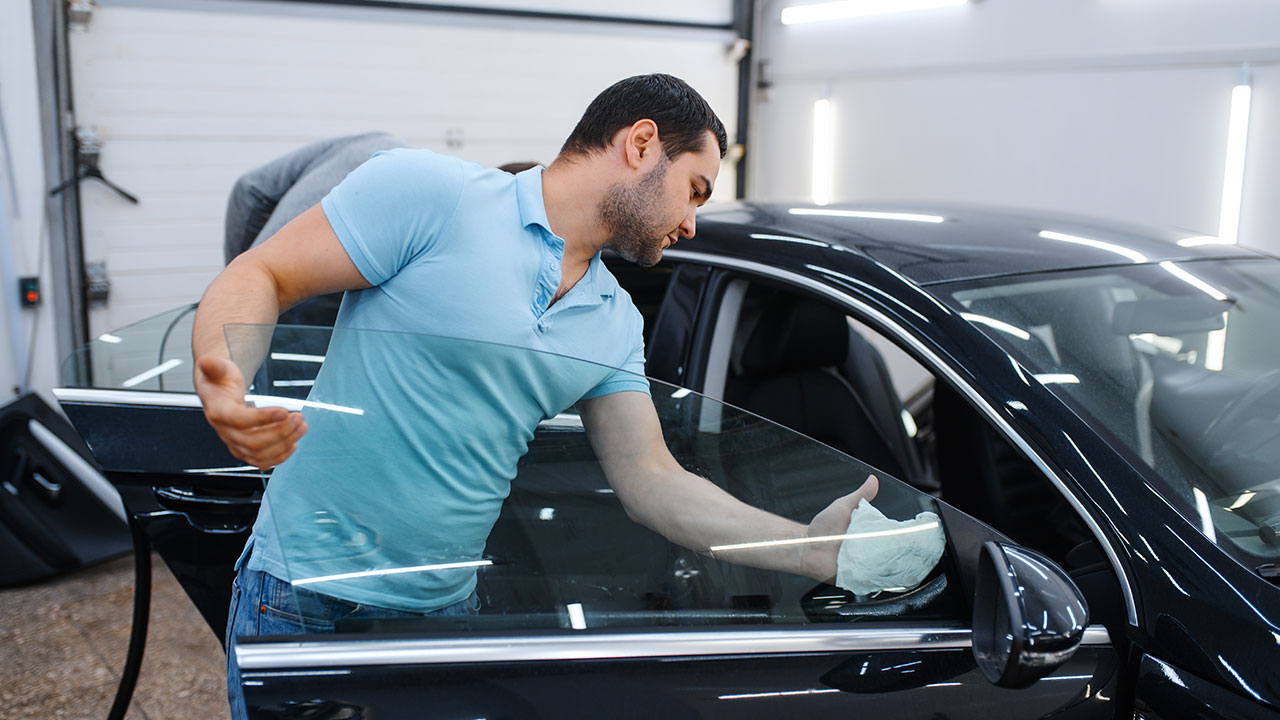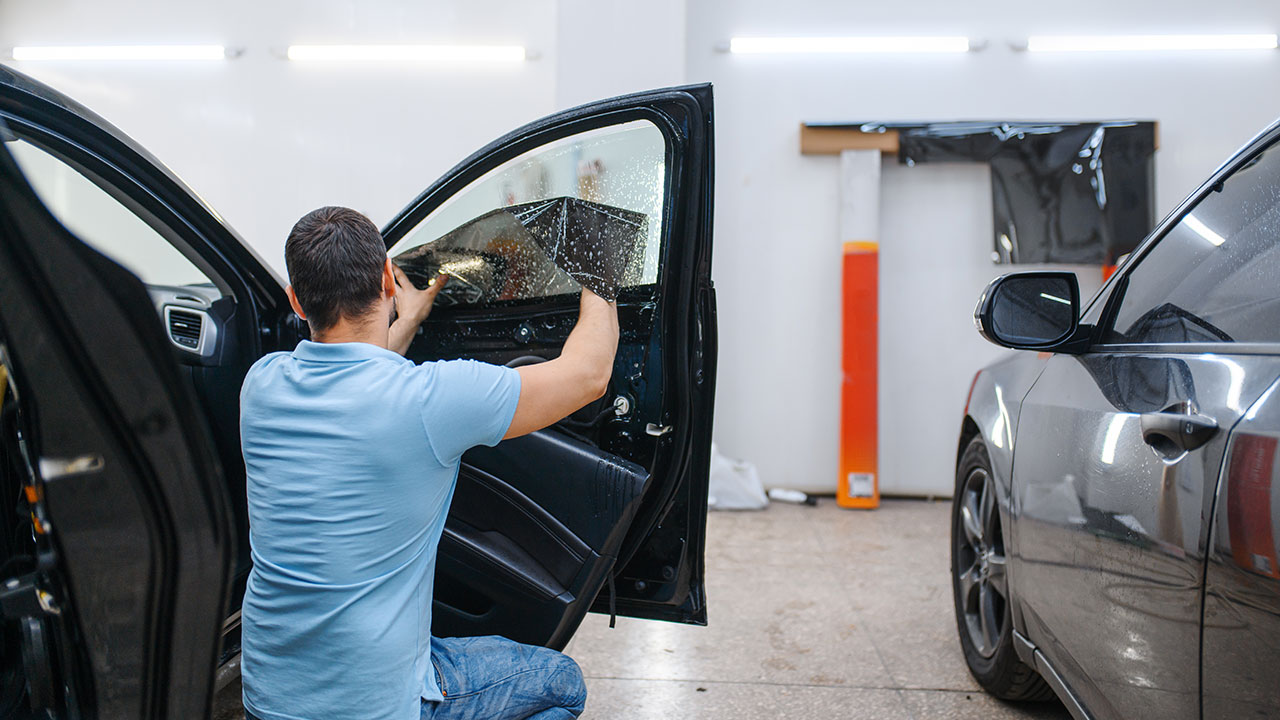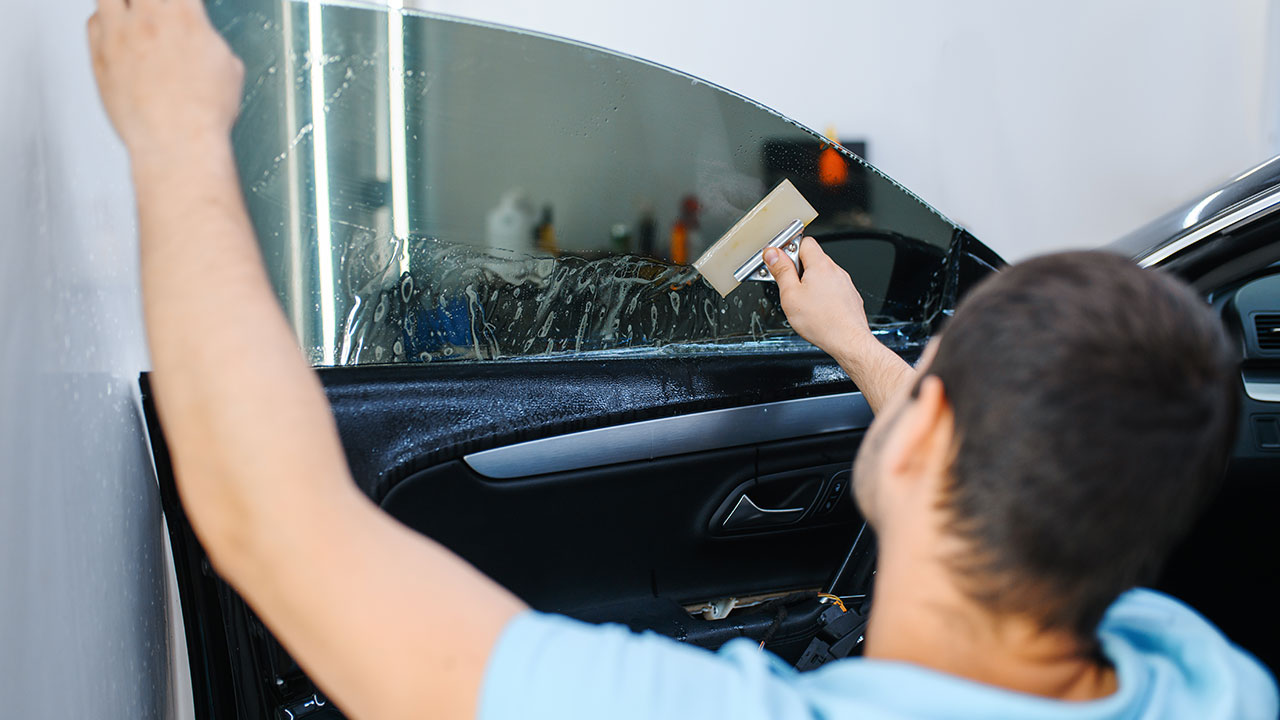Tinting car windows is a popular way to improve the aesthetic appeal of your vehicle, increase privacy, and reduce heat and glare. Window tinting keeps your car cooler and it protects the interior surfaces along with offering privacy from people looking into your car. This guide will answer your question,’ how to tint car windows?’.
Windows tinting adds style to your car’s appearance, reduces sunlight (UV rays) and keeps the interiors cooler. It blocks up to 99% of ultraviolet radiation (UV) and filters 90% of the sun’s infrared radiation (IR). This tint protects the interiors from damaging and allows your air conditioner to operate more efficiently.
The reduction of UV exposure is recommended by the Skin Cancer Foundation because it’s a leading cause of skin cancer. In this guide you will learn how to tint car windows film by yourself and save your money.
Table of Contents
While professional installation is always an option, you can achieve great results by doing it yourself with the right tools and patience. This detailed guide will walk you through the entire process.
What is Car Window Tinting?
The window tinting is a plastic film applied to your windows that darken the window’s glass. It helps reduce the amount of visible light passing through glass which is called the visible light transference (VLT). The higher the VLT percentage/number, the more VL it lets in.
Research has shown that 53% of skin cancer in the U.S. occur on the left side of the body. It correlates to the driver’s side of body that continuously exposed to sun. People who drive for extended periods of time, tinted car windows’ protection provides a crucial benefit to be safe against this risk.
Every vehicle that is sold in the United States, such as Subaru Outback comes with tinted glasses. To stay within your state’s legal limits, it’s important that you compensate for factory VLT before adding aftermarket window tint. Know your state’s laws before choosing the VLT percentage because it varies across the states.
The Different Types
There are several types and percentage levels of tint films with specific features, characteristics, and properties for each, as follows;
- Dyed: This tint is mostly used for appearance and privacy
- Metalized: These tints are embedded with metallic particles that reflect heat and humid radiation.
- Hybrid: These tints combine the best characteristics and features of dyed and metallized ones.
- Carbon: These tints use micro layers of polymer and carbon which reduces UV and IR.
- Ceramic: These are the highest quality and most technologically advanced tints available in the market.
Things to Consider when Choosing
It depends upon your needs and your motivation to buy one but you must consider your safety and above all your state’s laws before choosing the type and VLT percentage. You can also consider the following;
- Windows with two dark tints can impact your visibility while driving specifically at night.
- You can extend the life of carpets, dash pad, and trim by blocking UV rays and IR light.
- The cooler interiors by using tinted windows can reduce the air conditioning usage, ultimately increasing fuel efficiency.
- Tinted windows can add style, appeal, and enhance the appearance to your vehicle’s look.
- Tinted windows add privacy to your car.
How to Change Car Windows Tint?
Installing the window tint works best in a garage as it’s a clean, dry, and shaded area. But be patient and don’t rush. Carefully follow all steps to do the job properly by yourself. It may take 30 minutes or longer to correctly install window tints on both sides of the car.
Material You Need
Make sure you have everything you need to install the window tint and consider purchasing it beforehand. The following is the list of materials you need:
- Window film
- Large spray bottle full of soapy water (mix 2 tablespoons of dish detergent with a gallon of warm water)
- Razor blade Scraper and blades
- Microfiber towels
- Paint applicator
- Silicon squeegee
- Precision knife
- Vacuum cleaner
- Heat gun
Let’s explore the steps to tint your car windows:
Step 1: Prepare the Windows

To prepare the windows we need to use a mild glass cleaner. Do not use a glass cleaner with ammonia as it will alter the color of your tint. Steps to prepare the window are as follows;
Remove any stickers or adhesives
- Vacuum the interior to remove dust and dirt
- Thoroughly wash the inside and outside of the windows with the soapy water after using the vacuum
- Move to window glass up and down to clean the areas beneath and on top of the glass
- Use the razor scraper to remove any remaining dirt, grim or sticker residue
- Remove the stickers or anything attached to the glass
Thoroughly clean and dry the window
- Clean around the window trims, seals, gaskets, and any nooks and crannies that could be hiding dirt or grim
- Dry the glass completely with the squeegee with microfiber cloth.
Step 2: Size the Tint Film

The second most important step is to size the tint film as per the size of the windows. Following things can be considered in this regard;
Determine the adhesive side of the film
- It’s important to know which side of the film has the adhesive and do not remove the adhesive side.
- In this step you will not be installing the tip but you are basically using this to size the glass before installing.
- In short it will work as a template for the glass.
Spray the window with soapy water
- Starting with the passenger front side window, apply the soapy water outside the glass.
- Wetting the window before applying tint will help slide the film better to cut it accurately.
- Put the tint film by bringing the adhesive side towards you.
- Place the film until the side facing you leaves plenty of overhang film.
- Make sure it completely covers the entire outside of the window and cut this piece from the roll using blades.
Cut away a manageable size of tint film
- Gently press the tint onto the glass to temporarily keep it in a place in order to make sure it’s perfectly fit.
- Trim the film into a manageable size, leaving two to three inches overlapping the glass with the film.
- Smooth it with the tint applicator.
Take your knife and cut along the edges
- Hold the film in place with a squeegee or your hand, using the windows sides as your guide cut along the bottom.
- Then cut the film along the back and sides of the glass with the precision knife.
- Make sure you cut it at a low angle using only enough pressure to cut the film.
- Pull down on the film until it’s one inch lower than the bottom of the glass with the bottom of the film and gently lift the film away from the bottom of the glass.
Keep one inch on each side while cutting
- Lower the window one inch. Wet the glass and smooth out the film with the tint squeegee. Cut the top edge of the film using the glass as your guide leaving the one inch overhang at the bottom of the glass.
- Carefully cut away any extra film at the front or rear of the glass. Smooth out the corners or any wrinkles in the film.
Step 3: Apply the Tint Film

Here comes the most awaiting part, the application. Here are the steps, follow them accurately:
Prep the window with soapy water and a squeegee
- Wash and dry the inside of the window completely with all trim and seals.
- Any dust and dirt left behind will cause the film to bubble and it will not look good afterwards.
Keep on spraying soapy water
- Spray the inside of the glass with plenty of soapy water as we did for the outside glass – Spraying the glass with soapy water allows the film to slide into position more easily.
- Adhesive backing must be removed from the film from the outside window.
Peel off the top half of the liner from the tinting film
- Lower the window one inch and carefully peel the film from the outside glass.
- Then the wet adhesive side must be applied against the inside glass.
- Before applying the film, roll up the bottom edge to keep the adhesive from picking up any dirt from the environment.
- Spray the film with soapy water and slide into position
Use the applicator or squeegee to push the water out the edges
- Use the squeegee to push off water and air bubbles while working towards the sides and top.
- Then raise the window and also spray the bottom of the film and glass.
- Use the tint squeegee again to push out all the water and air bubbles
- Now, carefully tuck exposed edges of the film under the window seals.
Smooth out the window
- Continuous spraying the film as you work out air bubbles to prevent tearing.
- Using a heat gun can help remove air bubbles and excess water, while stretching the film to properly fit along the curved windows.
- Don’t get too close to the film or keep the heat gun in one place for too long. As too much heat can damage the film.
- Once finished, dry the film with the tint-free microfiber cloth.
You may repeat these steps for each window. Once the application is finished, don’t lower the windows for at least 7 to 10 days to allow the adhesive to fully cure.
Tips for a Professional Finish
- Patience is Key: Take your time to ensure the film is aligned and free of bubbles.
- Keep Everything Clean: Cleanliness is crucial. Dust or dirt will ruin the finish.
- Practice: If you’re new to tinting, consider practicing on a small window or a piece of glass first
Legal Considerations – Window tint laws vary by location. Ensure the tint level you choose is legal in your area to avoid fines and penalties.
By following these steps and taking your time, you can achieve a professional-quality tint job on your car windows. Happy tinting!

